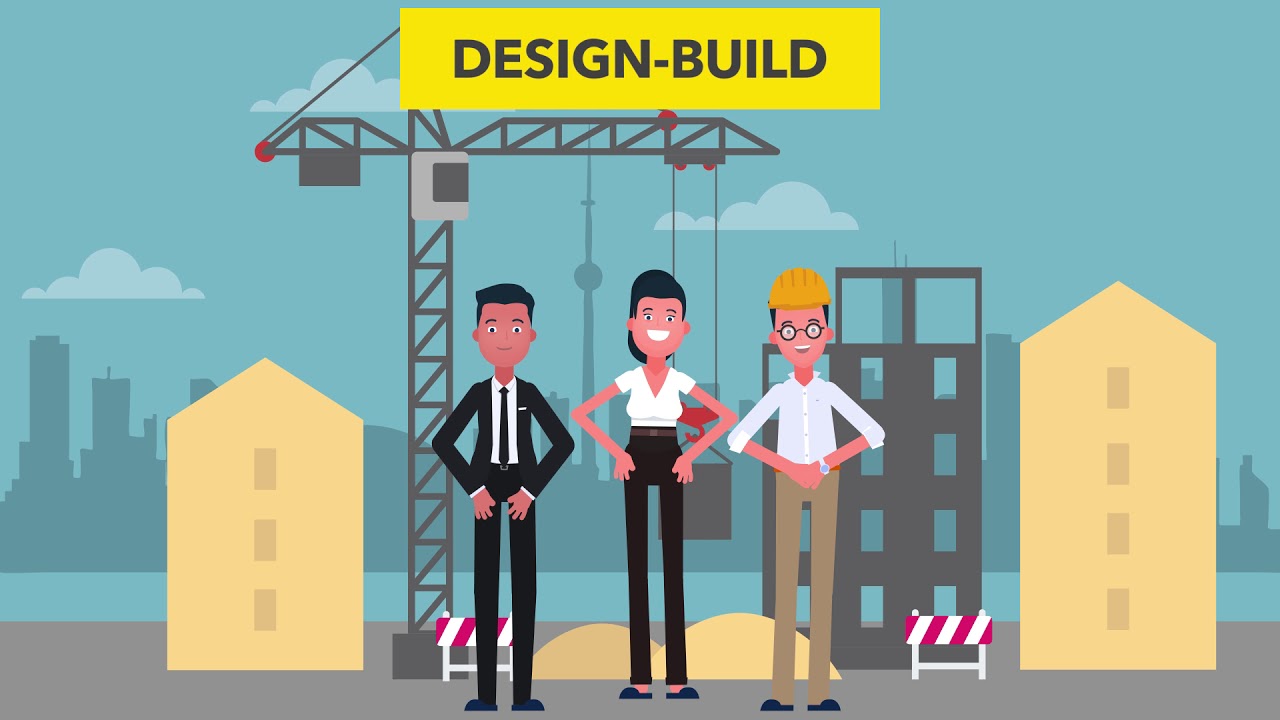Analyzing The Significance Of Design-Build Projects In Architecture And Construction - From Concept To Completion
In recent years, there has been a growing interest in analyzing the significance of design-build projects in architecture and construction due to the increasing popularity of this project delivery method. Design-build projects have been gaining immense popularity in recent times, especially in the construction and architecture industry.
Author:George EvansMar 16, 202346.7K Shares819.7K Views

In recent years, there has been a growing interest in analyzing the significance of design-build projects in architecture and constructiondue to the increasing popularity of this project delivery method.
Design-build projects have been gaining immense popularity in recent times, especially in the construction and architecture industry.
The design-build project approach integrates both the design and construction phases of a project under one contract, with one team responsible for the entire project.
This approach has significant advantages over the traditional design-bid-build approach, as it streamlines the project management process, reduces conflicts, and increases efficiency. In this article, we will analyze the significance of design-build projects in architecture and construction.
Analyzing The Significance Of Design-build Projects In Architecture And Construction
Design-build projects have become increasingly popular in the architecture and construction industries in recent years.
This project delivery method offers several benefits over traditional methods, including streamlined communication, faster project completion, and cost savings. However, there are also challenges associated with design-build projects that must be carefully considered.
What Are Design-Build Projects?
Design-build projects are a type of construction project delivery approach in which a single entity, known as the design-build team, is responsible for both the design and construction phases of a project.
This approach differs from the traditional design-bid-build approach, which involves separate contracts for design and construction, with different teams for each phase.
In a design-build project, the client hires a single design-build team to take care of the entire project, from the initial concept design to the final construction.
This approach streamlines the project management process, as it eliminates the need for the client to coordinate between separate design and construction teams. The design-build team is responsible for managing the entire project, from start to finish, and is held accountable for meeting the client's expectations and requirements.
Advantages Of Design-Build Projects
The design-build project approach has numerous advantages over the traditional design-bid-build approach, which has been widely used in the construction industry for decades. Some of the advantages of the design-build approach include.
- Single Point of Responsibility- In a design-build project, the design-build team is responsible for the entire project, from the initial design to the final construction. This approach eliminates conflicts between the design and construction teams, as there is only one team responsible for the project.
- Improved Communication- The design-build approach encourages better communication and collaboration between the design and construction teams, as they are working together from the beginning of the project. This leads to better decision-making, faster problem-solving, and a more efficient project management process.
- Time and Cost Savings - The design-build approach is known for its ability to save time and cost compared to the traditional design-bid-build approach. Since the design-build team is responsible for the entire project, there are no delays due to communication breakdowns between the design and construction teams. This leads to faster completion times and cost savings for the client.
- Flexibility- The design-build approach is more flexible than the traditional design-bid-build approach, as it allows for changes to be made throughout the project without affecting the project's timeline or budget. This is because the design-build team is responsible for managing the entire project, from start to finish.
- Improved Quality- The design-build approach is known for its ability to deliver higher-quality projects than the traditional design-bid-build approach. This is because the design-build team is responsible for both the design and construction phases of the project, which allows for better coordination and quality control throughout the entire process.
Design-Build Projects In Architecture
Design-build projects have gained immense popularity in the architecture industry, as they allow architects to have more control over the construction process and deliver higher-quality projects. In a design-build project, the architect is part of the design-build team, which allows for a more integrated approach to the project.
Challenges Of Design-Build Projects
While design-build projects have several benefits, they also come with challenges that must be addressed to ensure their success. Some of the most common challenges of design-build projects include -
Lack Of Competitive Bidding
Design-build projects do not have a competitive bidding process, which can result in higher costs. Without a competitive bidding process, there is no way to ensure that the project is being completed at the lowest possible cost.
However, this can be mitigated by selecting a design-build team with a proven track record of delivering projects within budget.
Limited Design Input
Design-build projects may limit the design input of the architect. In some cases, the contractor may have more influence over the design decisions, resulting in a design that prioritizes constructability over aesthetics. This can be mitigated by selecting a design-build team with a strong design focus.
Limited Project Control
Design-build projects may limit the project control of the owner. In traditional design-bid-build projects, the owner has more control over the project, as they select the design team and the construction team separately.
In design-build projects, the owner has less control over the design and construction process, as they are both handled by the same team. However, this can be mitigated by selecting a design-build team with a strong project management focus.
Factors Contributing To Success
Several factors contribute to the success of design-build projects in architecture and construction. By considering these factors, design-build projects can deliver successful outcomes. Some of the most important factors include -
Collaboration
Collaboration between the design and construction teams is essential for the success of a design-build project.
The team should work together from the beginning of the project to ensure that the design is practical and constructible and that the construction is built according to the design specifications.
Communication
Effective communication between the design and construction teams is crucial for the success of a design-build project.
The team should communicate regularly to ensure that everyone is on the same page regarding project goals, timelines, and budgets. This will help to avoid misunderstandings and delays.
Experience
Selecting a design-build team with experience in similar projects can greatly contribute to the success of a project.
Experienced teams can provide valuable insights into potential challenges and cost-saving measures. They also have a proven track record of delivering successful projects.

What is the Design-Build Construction Method? A Quick Introduction
Project Management
Strong project management is critical for the success of a design-build project. The team should have a project manager who is responsible for overseeing the entire project and ensuring that it is completed within the allocated budget and timeline.
The project manager should also be responsible for managing any issues that arise during the project.
People Also Ask
What Are Some Examples Of Successful Design-build Projects?
The Walt Disney Concert Hall in Los Angeles and the One World Trade Center in New York City are examples of successful design-build projects.
How Does Risk Allocation Work In A Design-build Project?
In a design-build project, the design-build team assumes a significant amount of risk, as they are responsible for both design and construction. This can make it difficult for owners to hold the team accountable if something goes wrong.
What Is The Importance Of Owner Involvement In A Design-build Project?
Owner involvement is essential for the success of a design-build project. The owner should be involved in the project from the beginning, providing input on project goals and budgets.
What Are Some Common Legal Issues That Arise In Design-build Projects?
Legal issues in design-build projects can arise from questions about liability, contractual disputes, and compliance with local building codes and regulations.
Conclusion
Analyzing the significance of design-build projects in architecture and construction has become increasingly popular in the architecture and construction industry due to their numerous benefits, such as faster project delivery, improved quality, and cost savings.
However, design-build projects also come with challenges, such as the lack of competitive bidding and limited design input.
The success of a design-build project depends on several factors, including collaboration, communication, experience, project management, and owner involvement. By considering these factors, design-build projects can deliver successful outcomes.

George Evans
Author
George Anderson, an exceptional architectural designer, envisions and brings to life structures that transcend the realm of imagination. With an unwavering passion for design and an innate eye for detail, George seamlessly blends form and function, creating immersive spaces that inspire awe.
Driven by a deep appreciation for the interplay of space, light, and materials, George's innovative approach redefines the possibilities of architectural design. His visionary compositions leave an indelible mark, evoking a sense of wonder and transforming the built environment.
George Anderson's transformative designs and unwavering dedication continue to shape the architectural landscape, pushing the boundaries of what is possible and inspiring generations to come.
Latest Articles
Popular Articles
